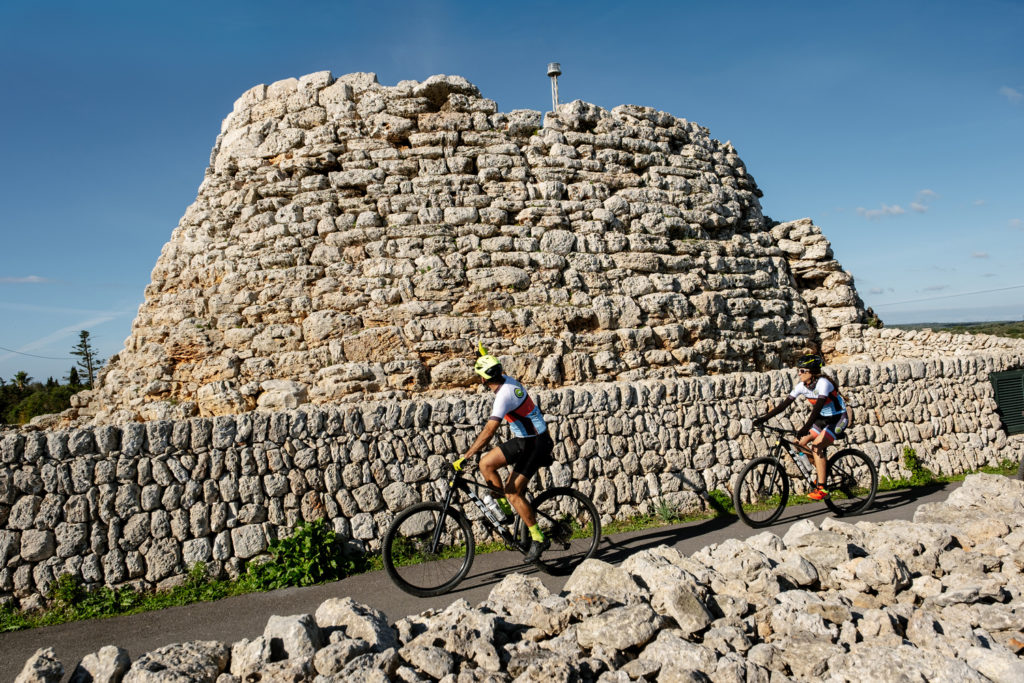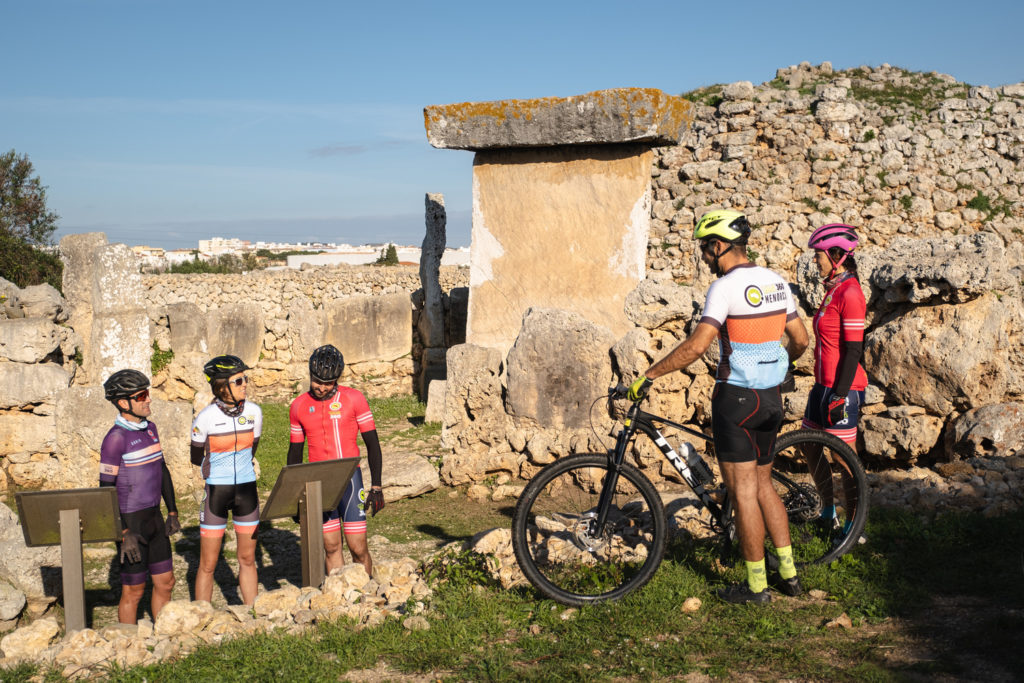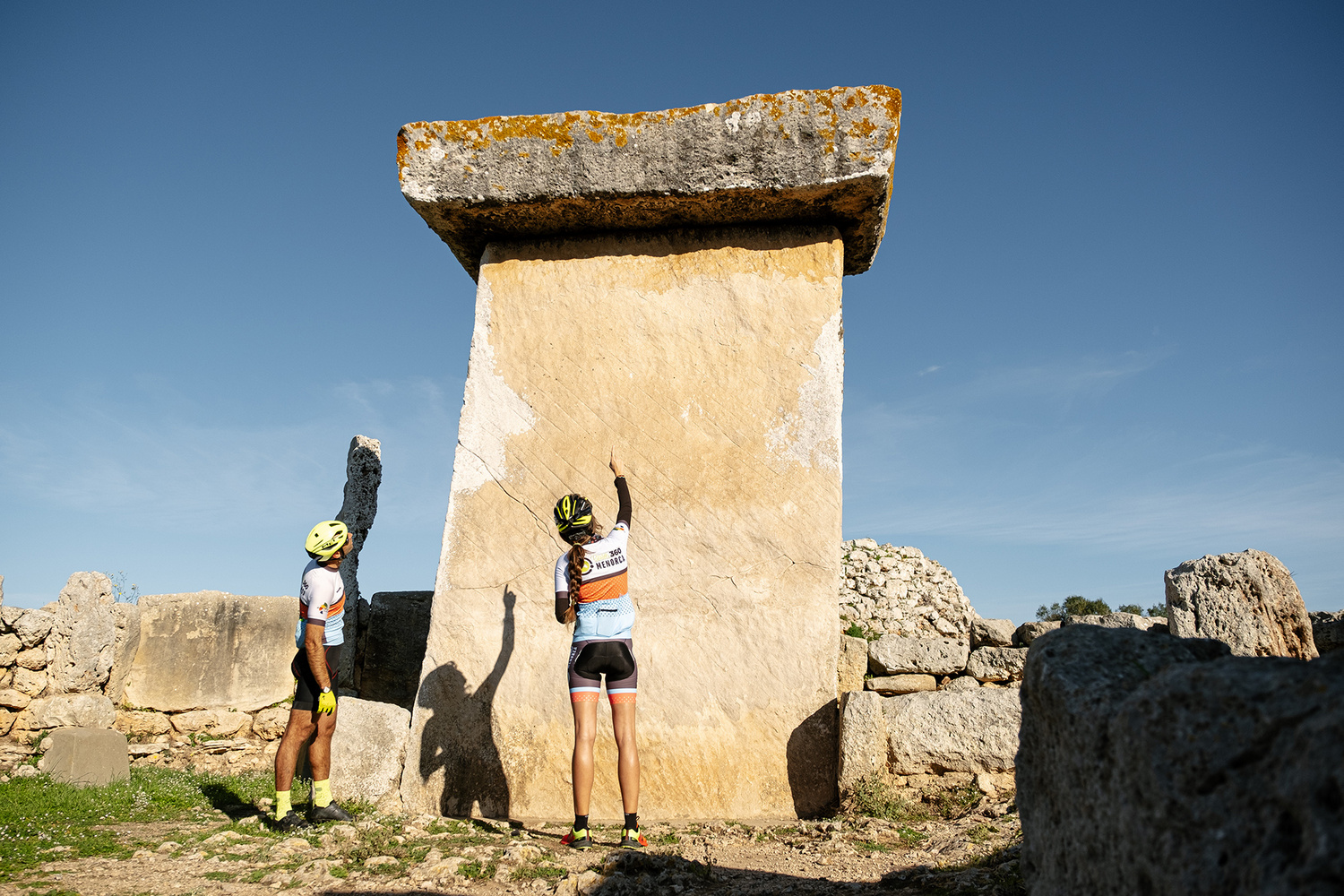Menorcan people are proud of our island and our past. And there is nothing that better embodies the island’s origins than the Talayotic civilization and the rich megalithic heritage that it bequeathed to us. Throughout the 700 km2 of the island, there are 1,500 talayotic sites, especially concentrated in the southern half. 280 of them have been gathered in a joint candidacy for World Heritage that will be submitted to Unesco on February and will be assessed for the 2022 list.
The Talayotic heritage is an almost ubiquitous presence in Menorca. Signs indicating the existence of one site or another appear by the road, along the paths and on all of the island’s maps and promotional items. Any visitor with a minimum sense of curiosity quickly becomes familiar with the icon that represents a taula and that graphically identifies the Talayotic Menorca.
Menorca 360º has a special awareness for the Talayotic heritage, which we like to admire and appreciate. Our programs include going by many of its main sites. Making our past known and enjoying at the same time their enduring constructions, makes a lot of sense and contributes to more and better knowing and loving the island.

Some history
The Talayotic civilization flourished in Menorca during the Bronze Age and the Iron Age. its footprint extends from before 1000 BC until 123 BC, when the Romans arrived and started the Romanization. Before the Talayotic period, the island’s inhabitants were stablished in scattered single-family settlements known as dwelling navetas.
With the beginning of the Talayotic period, the population began to come together in larger settlements, surrounding a tower-shaped construction called talayot. They had streets and other public areas. The economy of these people was mainly based in agriculture and rearing goats and sheep.
During more than ten centuries of evolution, the Talayotic civilization progressed. By 500 BC, talayots were no longer being built. Instead of that, settlements began to build walls and fortifications, as the consequence of contact with foreigners. Those outsiders also brought an intensification of trade.
The expansion of the Roman Empire in the Mediterranean and the defeat of the Carthaginians, led to the annexation of the Balearic Islands in 123 BC. From then on, the inhabitants of Menorca were modifying their way of life, forgetting the Talayotic tradition and adopting Roman culture.

Types of constructions
The Menorca 360º participants can discover, along the roads and landscapes of the island, the whole range of constructions typical of the Talayotic culture. The most common and notable structures of the Talayotic heritage are:
Talayots: These large truncated cone-shaped towers were the most representative constructions of the Early Talayotic period. There are different types, but all of them have their public use and their symbolism as elements for social cohesion in common. Their function is unclear.
Burial navetas: Originated in a pre-Talayotic period, these are collective tombs built with double dry stone walls. They were out of use quite early, but some of them are among the most important sites of the island.
Caves: The Talayotic civilization was replacing the burial navetas with natural caves, closed with stone walls. They were located in remote places, such as ravines and cliffs.
Hypogea: Over the centuries, and especially in the Late Talayotic period, the natural caves led to excavated ones. In some places, the became large necropolis. They still were group graves where complex rituals were held.
Taula enclosures: This construction stands out for its central taula, a T-shaped element made up of a vertical stone with a horizontal one on top of it. Some reach four meters height or even more. The enclosures performed a function like a sanctuary, where various types of rituals were performed.
Circles: In the Late Talayotic period, family homes took this circular shape, which included a central patio and different domestic spaces where all day-to-day activities could be carried out.

A few sites
The Menorca 360º programs offer participants the chance of seeing some of the most outstanding sites on the island, such as Trepucó, Torre d’en Galmés, Torralba d’en Salort, Talatí de Dalt and Torretrencada. In addition, our paths also pass through some other talayots such as those of Cornia Nou or Torelló, Ses Roques Llises dolmen, Rafal Rubí navetas and many other significant elements of the island’s pre-Roman heritage.
